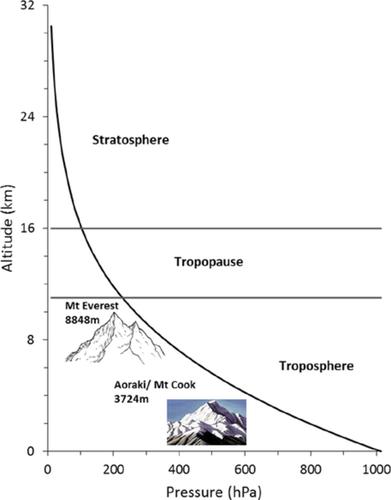当前位置:
X-MOL 学术
›
Int. J. Climatol.
›
论文详情
Our official English website, www.x-mol.net, welcomes your
feedback! (Note: you will need to create a separate account there.)
The influence of atmospheric circulation patterns during large snowfall events in New Zealand's Southern Alps
International Journal of Climatology ( IF 3.5 ) Pub Date : 2020-12-11 , DOI: 10.1002/joc.6966 Rasool Porhemmat 1 , Heather Purdie 1 , Peyman Zawar‐Reza 1 , Christian Zammit 2 , Tim Kerr 3
International Journal of Climatology ( IF 3.5 ) Pub Date : 2020-12-11 , DOI: 10.1002/joc.6966 Rasool Porhemmat 1 , Heather Purdie 1 , Peyman Zawar‐Reza 1 , Christian Zammit 2 , Tim Kerr 3
Affiliation

|
Large snowfall events contribute significantly to total annual snow accumulation across the maritime Southern Alps. However, the knowledge about atmospheric circulation patterns associated with large snowfall events over the New Zealand Southern Alps is very limited. Daily snow observation data from three automatic weather stations and ERA‐Interim reanalysis data were used to investigate the relationship between atmospheric forcing and large snowfall events across the Southern Alps. To do so, analysis of composite anomaly maps during large snowfall events were carried out to identify the common features of the days with heavy snow accumulation. Large snowfall across the Southern Alps are mainly associated with strong negative anomalies of sea level pressure (SLP) located over the southwest of New Zealand's South Island. These conditions are concurrent with negative anomalies of geopotential heights at 500 (Z500) located in the centre of low‐pressure systems. However, over New Zealand, days leading to large snowfall events experience positive anomalies of Z500 showing a relatively warm environment during such events in the maritime Southern Alps. Positive anomalies of low‐tropospheric temperatures (850 and 1,000 hPa) over the Tasman Sea and across the Southern Alps, strong values of integrated vapour transport (IVT) as well as high frequency of local synoptic patterns associated with troughing regimes (~78%) during large snowfall events provide more evidence of the important contribution of warm air flows.
中文翻译:

新西兰南阿尔卑斯山大降雪事件中大气环流模式的影响
大型降雪事件显着影响了整个海上南部阿尔卑斯山的年度积雪总量。但是,关于与新西兰南部阿尔卑斯山大雪事件相关的大气环流模式的知识非常有限。来自三个自动气象站的每日降雪观测数据和ERA-Interim重新分析数据用于调查整个南阿尔卑斯山的大气强迫与大降雪事件之间的关系。为此,对大型降雪事件期间的合成异常图进行了分析,以识别积雪较大的日子的共同特征。横跨南阿尔卑斯山的大降雪主要与位于新西兰南岛西南部的海平面气压(SLP)的强烈负异常有关。这些条件与位于低压系统中心的500(Z500)处的负电位高度异常并存。但是,在新西兰,导致大雪事件的日子经历了Z500的正异常,在海上阿尔卑斯山南部此类事件中显示出相对温暖的环境。塔斯曼海和整个南阿尔卑斯山低对流层温度(850和1,000 hPa)的正异常,强的整体蒸汽传输(IVT)值以及与低谷状态相关的局部天气模式的高频率(〜78%)在大雪事件期间,提供了更多证据表明暖气流的重要作用。在导致大型降雪事件的几天里,Z500的正异常在海上南部阿尔卑斯山的此类事件中表现出相对温暖的环境。塔斯曼海和整个南阿尔卑斯山的低对流层温度正异常(850和1,000 hPa),强蒸汽综合输运(IVT)值以及与槽型相关的局部天气模式的高频率(〜78%)在大雪事件期间,提供了更多证据表明暖气流的重要作用。在导致大型降雪事件的几天里,Z500的正异常在海上南部阿尔卑斯山的此类事件中表现出相对温暖的环境。塔斯曼海和整个南阿尔卑斯山低对流层温度(850和1,000 hPa)的正异常,强的整体蒸汽传输(IVT)值以及与低谷状态相关的局部天气模式的高频率(〜78%)在大雪事件期间,提供了更多证据表明暖气流的重要作用。
更新日期:2020-12-11
中文翻译:

新西兰南阿尔卑斯山大降雪事件中大气环流模式的影响
大型降雪事件显着影响了整个海上南部阿尔卑斯山的年度积雪总量。但是,关于与新西兰南部阿尔卑斯山大雪事件相关的大气环流模式的知识非常有限。来自三个自动气象站的每日降雪观测数据和ERA-Interim重新分析数据用于调查整个南阿尔卑斯山的大气强迫与大降雪事件之间的关系。为此,对大型降雪事件期间的合成异常图进行了分析,以识别积雪较大的日子的共同特征。横跨南阿尔卑斯山的大降雪主要与位于新西兰南岛西南部的海平面气压(SLP)的强烈负异常有关。这些条件与位于低压系统中心的500(Z500)处的负电位高度异常并存。但是,在新西兰,导致大雪事件的日子经历了Z500的正异常,在海上阿尔卑斯山南部此类事件中显示出相对温暖的环境。塔斯曼海和整个南阿尔卑斯山低对流层温度(850和1,000 hPa)的正异常,强的整体蒸汽传输(IVT)值以及与低谷状态相关的局部天气模式的高频率(〜78%)在大雪事件期间,提供了更多证据表明暖气流的重要作用。在导致大型降雪事件的几天里,Z500的正异常在海上南部阿尔卑斯山的此类事件中表现出相对温暖的环境。塔斯曼海和整个南阿尔卑斯山的低对流层温度正异常(850和1,000 hPa),强蒸汽综合输运(IVT)值以及与槽型相关的局部天气模式的高频率(〜78%)在大雪事件期间,提供了更多证据表明暖气流的重要作用。在导致大型降雪事件的几天里,Z500的正异常在海上南部阿尔卑斯山的此类事件中表现出相对温暖的环境。塔斯曼海和整个南阿尔卑斯山低对流层温度(850和1,000 hPa)的正异常,强的整体蒸汽传输(IVT)值以及与低谷状态相关的局部天气模式的高频率(〜78%)在大雪事件期间,提供了更多证据表明暖气流的重要作用。











































 京公网安备 11010802027423号
京公网安备 11010802027423号